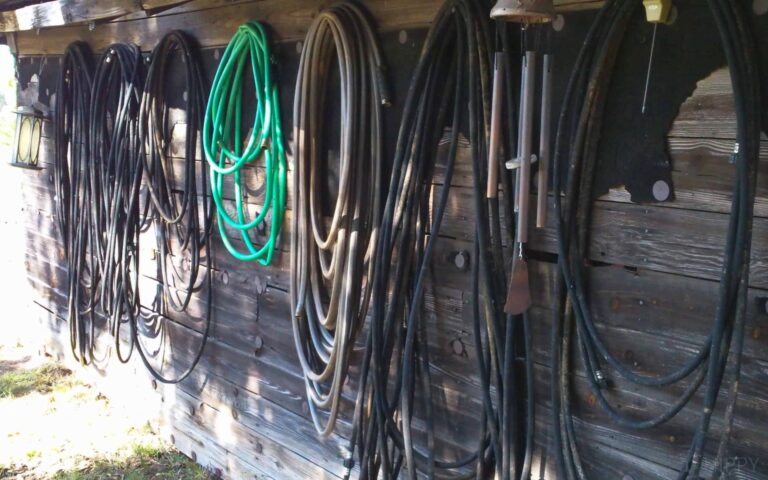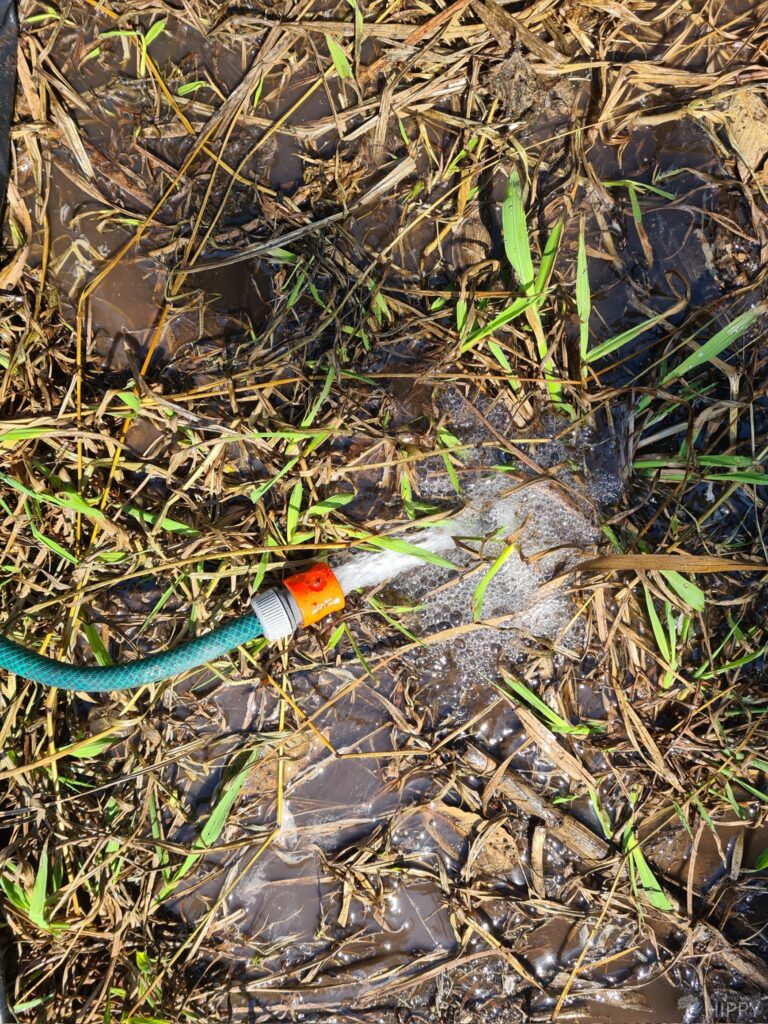Have you ever stopped to ask yourself why garden hoses are green? It’s a question that doesn’t often cross people’s minds.

Is it due to tradition? Is it because the usual materials are naturally green in color as made in the factory? Is it something else entirely? The answer is more practical than you might think.
So, just why are garden hoses green?
Garden hoses are green because it helps them to blend in with their usual surroundings of grass and other vegetation. Green also absorbs less UV radiation and heat than black or other dark colors.
This helps to keep the temperature of the hose itself and the water within cooler which, in turn, increases the lifespan of the hose, and helps vegetation make better use of the water dispensed.
There you have it. It turns out that green is really a practical color for a hose in most places. But hoses aren’t always green, and nor should they be. Keep reading to learn more about this interesting question than you ever wanted to.
Green Hoses Blend in Better with Grass and Plant Life
As mentioned, one of the main reasons garden hoses are green is because it helps them to better blend in with their surroundings.
If you think about it, most gardens and yards have a lot of green in them from grass to other plant life. Having a green hose helps it to visually disappear more so than if it was another color.
While this may not seem like a big deal, it actually is quite important to people who care about aesthetics. A hose that blends in is less likely to be noticed, and that helps keep your property looking snappy.
This is of particular concern when the hose is being used to feed misting systems or sprinklers in the yard. In hot seasons, these are often left connected to run during the hottest parts of the day or to be activated periodically.
In any case, a contrasting color hose would be immediately noticeable, and a bit tacky…
Green is Better than Black for Beating Heat
Aesthetics are fine, and a good enough reason to go green for most, but there are strictly practical considerations for the color, too.
Green, as it turns out, is better at reflecting UV radiation and heat than black or dark gray, other typical hose colors. This helps to keep the hose itself cooler, which in turn increases its lifespan.
It also helps to keep the water temperature lower as it comes out of the hose. That’s great news for your plants because they can make use of the water more efficiently when it’s not scalding hot.
Hot water can actually cause damage to plants. The high temperatures can shock the roots and leaves, causing them to wilt and dry out.
In addition, hot water can dissolve important nutrients in the soil, making them unavailable to plants. It can also encourage fungal infestations.
So next time you’re watering your plants, you’ll want the water as cool as possible, and a green hose helps achieve that.

Green is a Good Color for Marketing to Gardeners
Not for nothing, there are purely, ah, economic reasons for garden hoses being green: they sell! Green is a popular color for garden equipment, and it’s not hard to see why.
It’s the color of nature, after all, and with personal identity and values projection being a big part of purchasing decisions it is no wonder that so many “green thumbs” want a green hose.
And the more tools you buy in a given color the more that most people want in that color. Call it OCD, style or whatever you like but the allure of matching equipment is difficult to overcome for some folks.
It starts out with a hose, but then you add spades, trowels, shears, pruners and more. Wouldn’t it be nice if they all matched? Maybe not a concern for most of us, but the pull is real for others!
But there’s more to the psychology than that. Green is also a calming color, and one that is associated subliminally with growth and renewal. Will water from a green hose help your plants grow better? Certainly not. But, maybe, just maybe…
All jokes aside, you don’t have to get a green hose if you don’t want one. They come in plenty of other colors these days. But green is definitely the traditional option in most parts of the country and one that will look good and still perform well.
Garden Hoses Sold in Arid or Rocky Environments are Usually Different Colors
Knowing what you know now about the green coloring of garden hoses, you may not be surprised to learn that ones sold in other, non-green environments are usually a different color.
The logic is the same as always: hoses used around the home and property should blend in. In desert conditions where there’s often very little green plant life around, a green hose would stick out like neon against the sandy earth tones.
For this reason, you’ll find hoses in these areas are more likely to be tan, brown, or even a pale gray color. Areas with rich soil and little topcover will often be brown or umber in color.
While it may seem like a small thing, again, people want their hoses to blend in, not stick out.
Utility Hoses May Be Any Color
Lastly, hoses designed to be used with various power tools or other machinery may come in any sort of color, and often, color is the last consideration concerning the performance of such hoses.
Material strength is paramount, and any dyes or paints that might interfere with that objective will be excluded. For these hoses, green is as likely as any other color, but don’t be surprised to see orange or even red in some instances.
In the End, Hose Color doesn’t Matter that Much
I’ll close by saying this: don’t get too wrapped around the axle worrying about what color is “best” for your garden hose. You can buy any color type you like so long as it can do the job you ask of it.
Even when considering water temperature as a factor, this is easily overcome if you don’t leave your hose lying out pressurized with water sitting in it. Or, just remember to discard the first few seconds of water coming out when you go to water your plants.
Tom has built and remodeled homes, generated his own electricity, grown his own food and more, all in quest of remaining as independent of society as possible. Now he shares his experiences and hard-earned lessons with readers around the country.
Find out more about the team here.
